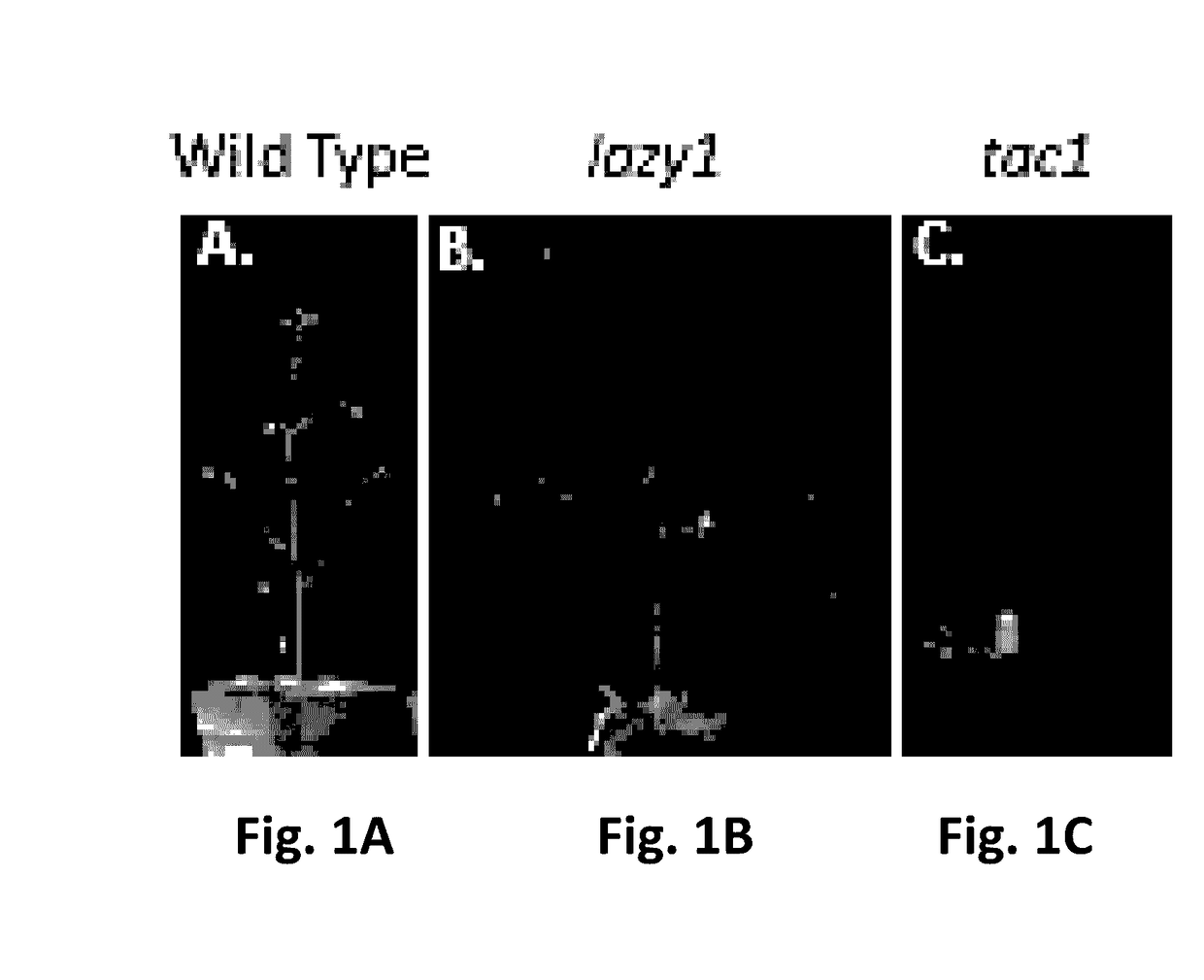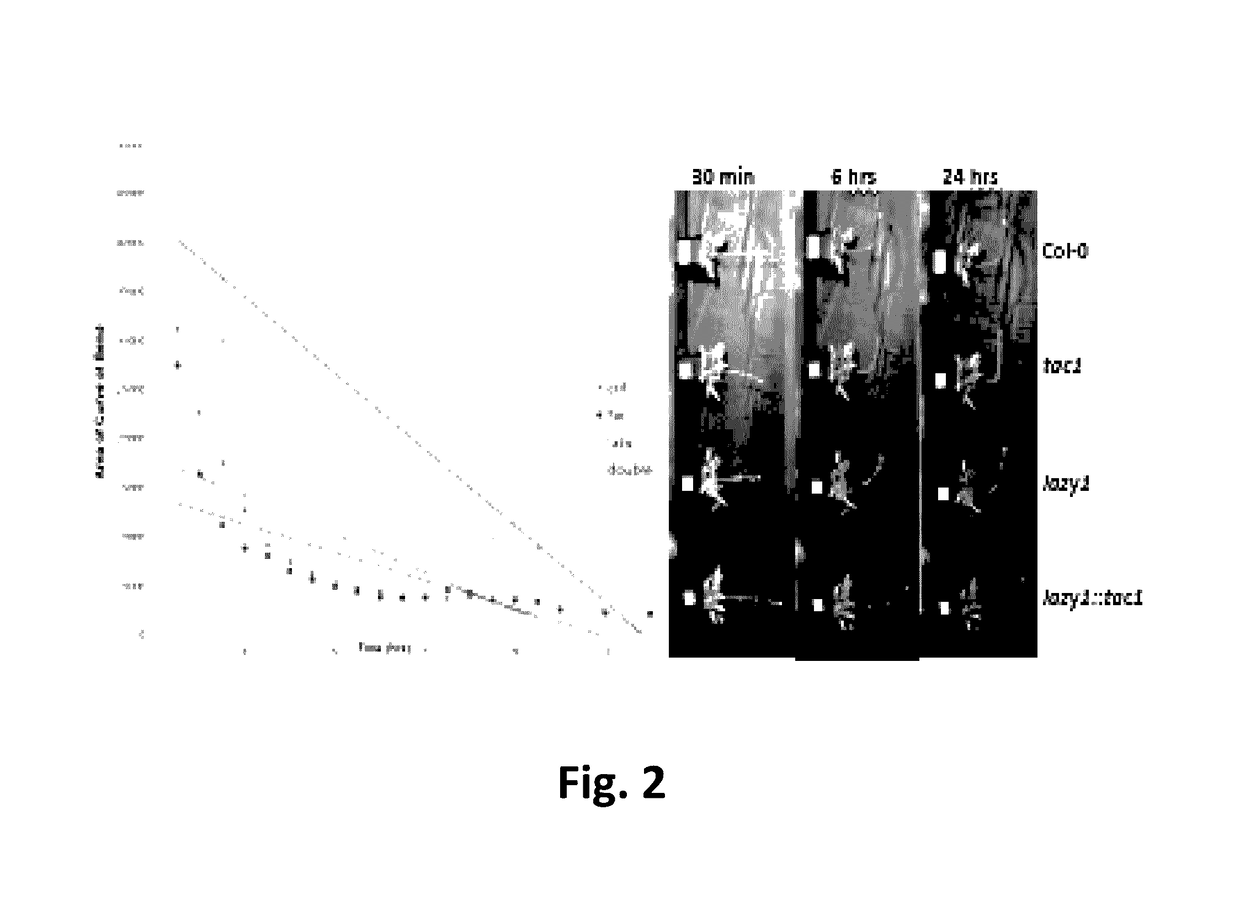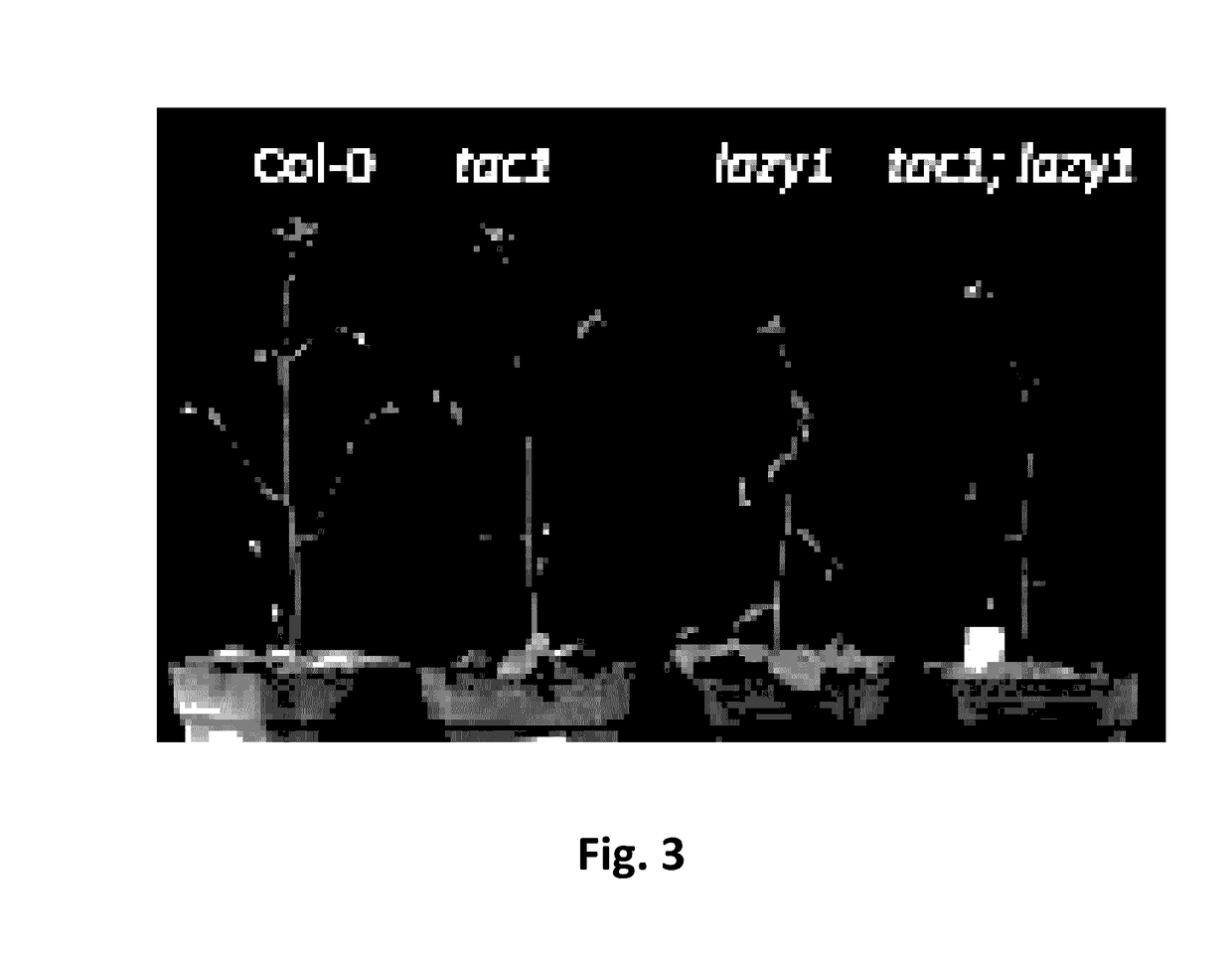Functional Analysis of LAZY1 in Arabidopsis thaliana and Prunus Trees
a technology of lazy1 and arabidopsis thaliana, which is applied in the field of gene lazy1, can solve the problems of limiting the density and yield of planting, difficult and slow breeding, and laborious efforts
- Summary
- Abstract
- Description
- Claims
- Application Information
AI Technical Summary
Benefits of technology
Problems solved by technology
Method used
Image
Examples
example 1
Arabidopsis Mutants
[0053]The Arabidopsis lazy1 mutant line previously described by Yoshihara et al. (2013. Plant J. 74:267-279) was obtained from the Arabidopsis Biological Resource Center (ABRC). The tac1 mutant line was previously described by Dardick et al., 2013. A double tac1;lazy1 homozygous mutant line was obtained via crossing. Double homozygous lines were confirmed via PCR using previously published primer sets (Ku et al. 2013, supra; Dardick et al. 2013, supra). All plants were maintained in were grown in 4 inch pots (one plant per pot) under fluorescent light (80 μmol m−2s−1) in an environmental growth chamber set at 21° C. and 50% humidity unless otherwise specified.
[0054]An Arabidopsis knock-out mutant containing a T-DNA insertion within the LAZY1 gene was previously reported by Yoshihara et al. (2013, supra). We generated and characterized homozygous lines for this same mutant prior to that report in order to study potential functional relationships with TAC1. lazy1 Ar...
example 2
Gravitropism Experiments
[0055]For gravitropism experiments, 4-5 week old plants having a single inflorescence shoot were adapted to dark conditions under green light illumination for 1 hr. Plants were then placed in a custom built rack which was rotated 90° to simultaneously stimulate shoot bending. Images were taken every minute for up to 24 hrs. The software Image J was used to quantify bending. Briefly, the curve of a circle is fit to the bent stem image and the area of the circle is calculated as an estimate of the stem arc. A minimum of 22 plants was used for each mutant and control line.
[0056]We performed comparative gravitropic bending experiments using tac1, lazy1, and tac1;lazy1 Arabidopsis mutants. The lazy1 mutant was previously reported to exhibit a complete loss of gravitropism (Yoshihara et al. 2013. Plant J. 74:267-279). Mature plants were adapted to conditions of green light for 1 hour prior to re-orientation (to avoid possible photostimulatory effects) and imaged un...
example 3
Plum Transformation
[0058]To generate LAZY1 silenced plum lines, a hairpin construct was created in pHellsgate 8.0 vector (Helliwell et al. 2002. Func. Plant Biol. 29(10):1217-1225). A 306 bp fragment (SEQ ID NO:4) corresponding to a portion of the peach LAZY1 gene (peach genome version 1.0 ID ppa007017) was amplified and cloned into the pENTR-D TOPO cloning vector (Invitrogen, Carlsbad, Calif.). The sequence in the resulting plasmid was next cloned into pHellsgate 8.0 plasmid using LR Clonase (Invitrogen, Carlsbad, Calif.). The pHELLSGATE 8.0 plasmid containing peach LAZY1 gene fragment was designed to silence LAZY1 and transformed into Agrobacterium tumefaciens strain GV3101. The gene construct was engineered into European plum (Prunus domestica L) following the protocol of Petri et al. (2012. Mol. Breeding 22:581-591). Cold (4° C.) stored seeds of ‘Bluebyrd’ plum were used for transformation. Briefly, the seeds were first cracked to remove stony seed coat, surface sterilized with ...
PUM
| Property | Measurement | Unit |
|---|---|---|
| Angle | aaaaa | aaaaa |
| Density | aaaaa | aaaaa |
| Shape | aaaaa | aaaaa |
Abstract
Description
Claims
Application Information
 Login to View More
Login to View More - R&D
- Intellectual Property
- Life Sciences
- Materials
- Tech Scout
- Unparalleled Data Quality
- Higher Quality Content
- 60% Fewer Hallucinations
Browse by: Latest US Patents, China's latest patents, Technical Efficacy Thesaurus, Application Domain, Technology Topic, Popular Technical Reports.
© 2025 PatSnap. All rights reserved.Legal|Privacy policy|Modern Slavery Act Transparency Statement|Sitemap|About US| Contact US: help@patsnap.com



